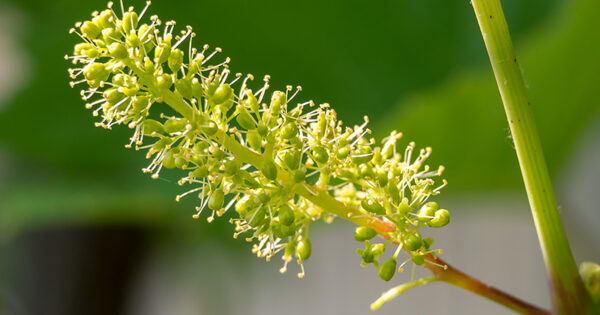Flowering – coulure/shatter and millerandage
Acting on flowering to avoid coulure/shatter and millerandage

The reproductive cycle of the vine beginning with the initiation of future inflorescences (year N-1) continues in the second year by the development of flower buds followed by the flowering from May to June. In spring, the flowering can be affected, depending on weather conditions, the level of reserve capacity in wood, roots and floral potential (initiated N-1), and result in a shatter of flowers and sometimes significant yield loss (“millerandaged” clusters…).
Solution
Due to the complexity of the vine reproductive cycle over several years, the treatment of floral shatter/coulure can only be considered over the long term. Indeed, from the stage of visible clusters the carbohydrate demand becomes very important to meet the needs of flower development. This requires an optimal build-up of carbohydrate reserves during the previous campaign (s). That is why, the improvement of flowering, particularly on sensitive grape varieties, should be achieved through the implementation of a suitable NSP (Nutrition and Stimulation Program), which will help to take action on both the nutrition of the vine, its reserve capacity and the availability of major nutrients (ANTYS PMg) that will enhance the resistance and development of flowers (phosphorus, magnesium, boron…). etc
Test results in recurring conditions of coulure/shatter and millerandage on Grenache
 Control vines and vines with implementation of an NSP by Frayssinet.
Control vines and vines with implementation of an NSP by Frayssinet.
Contact us for more information on the NSP.
